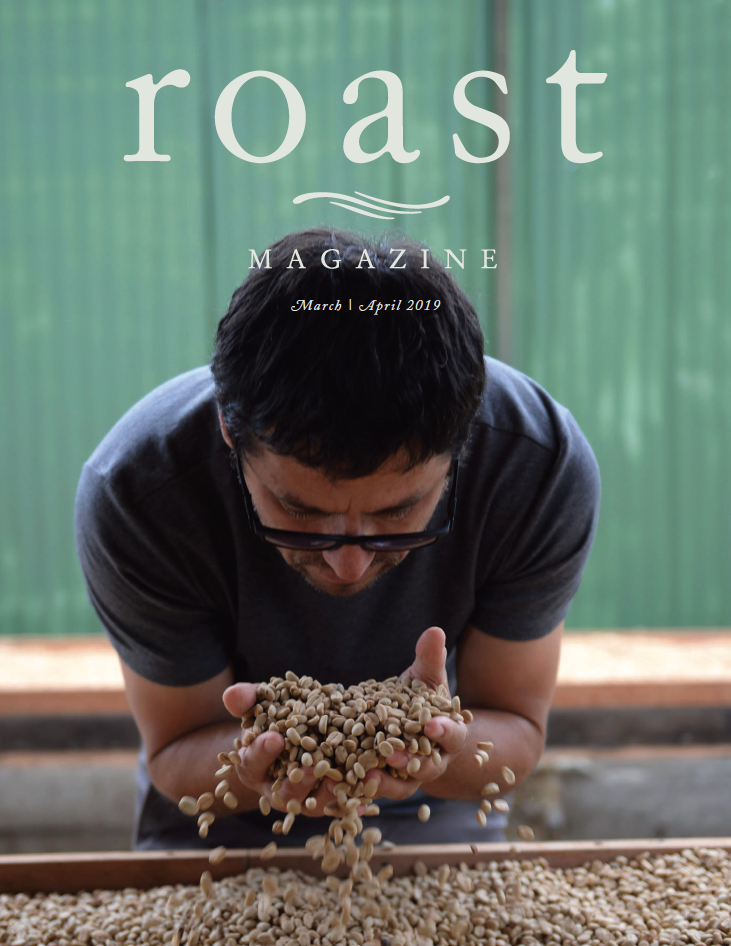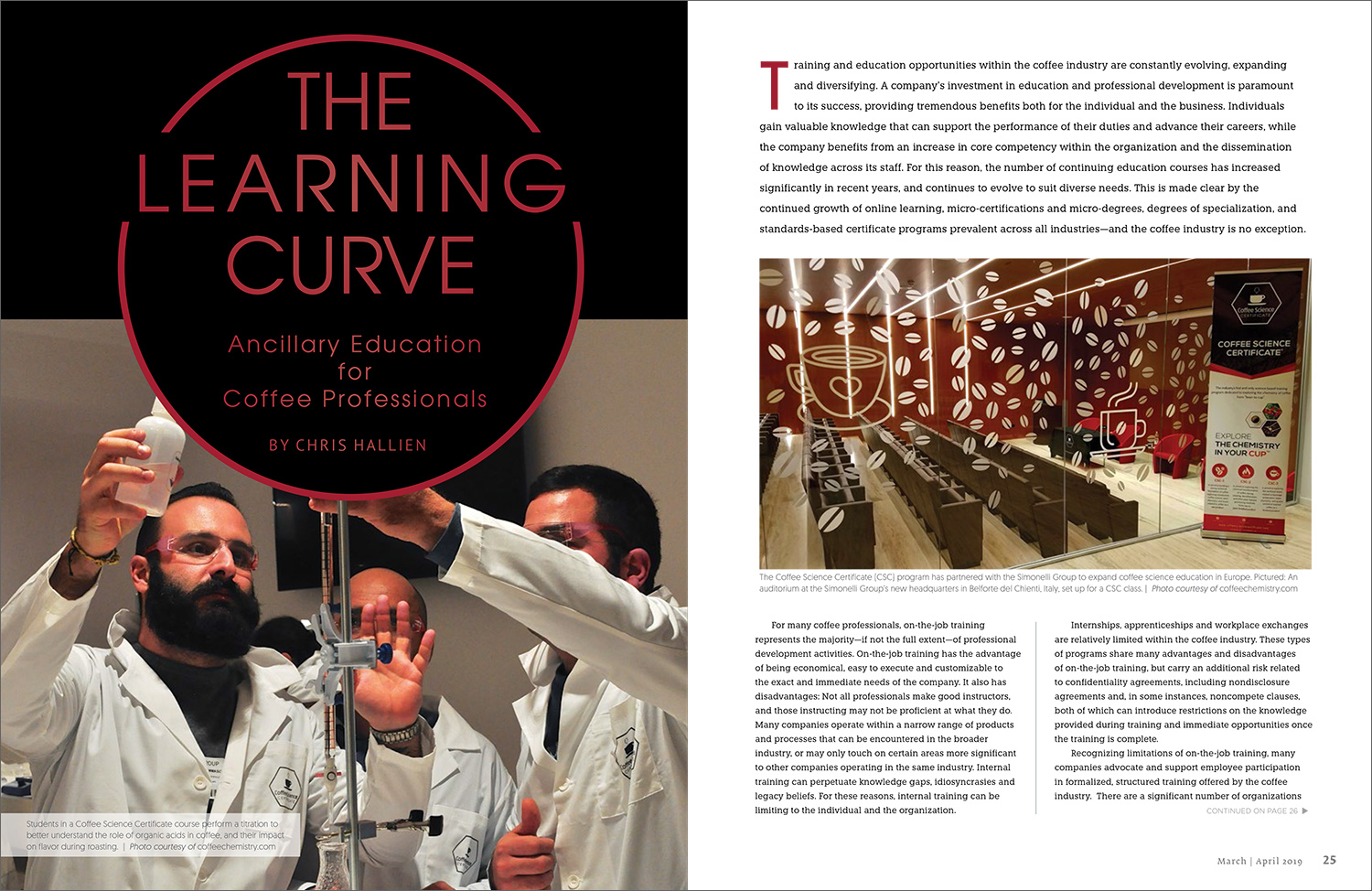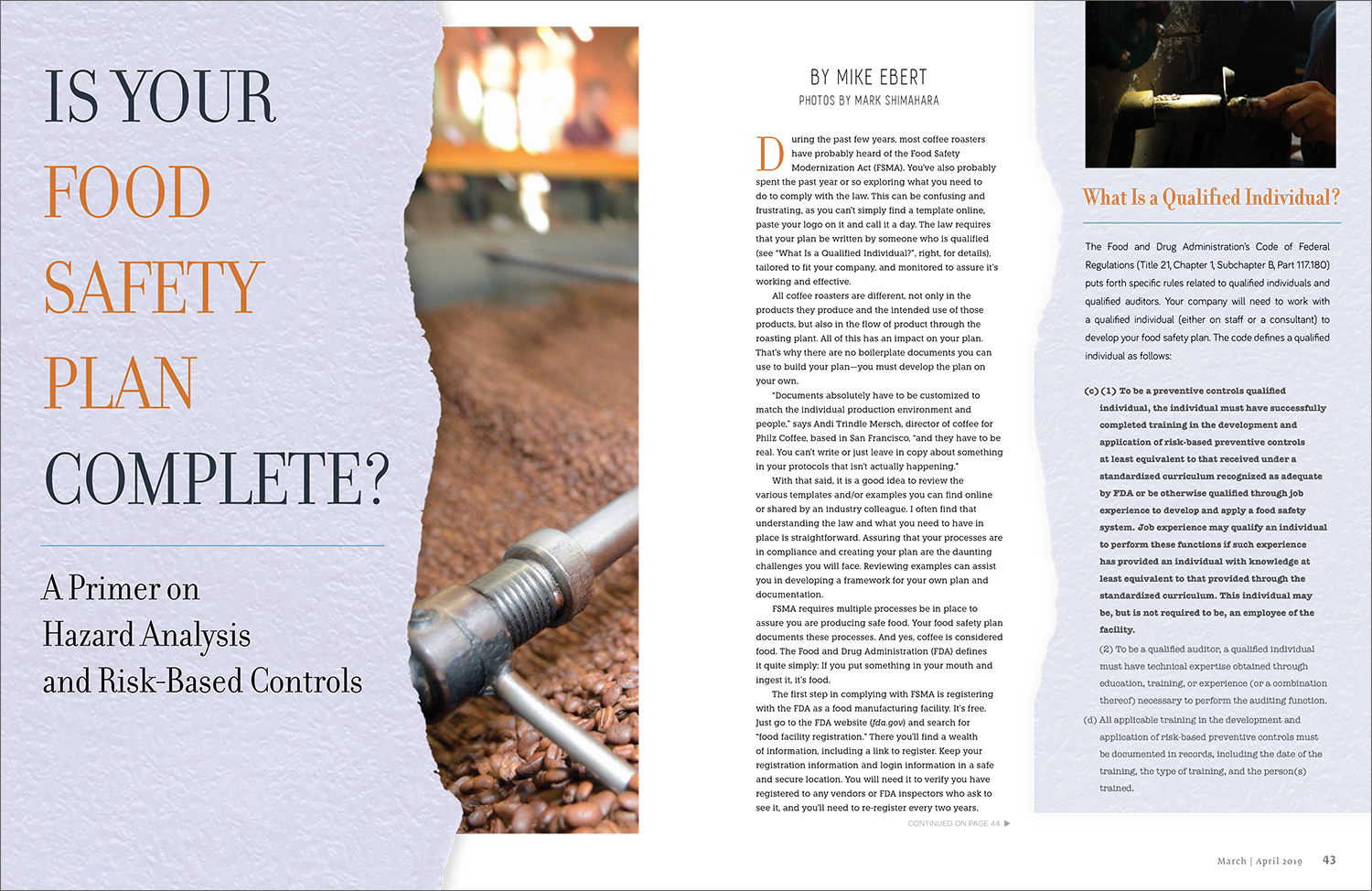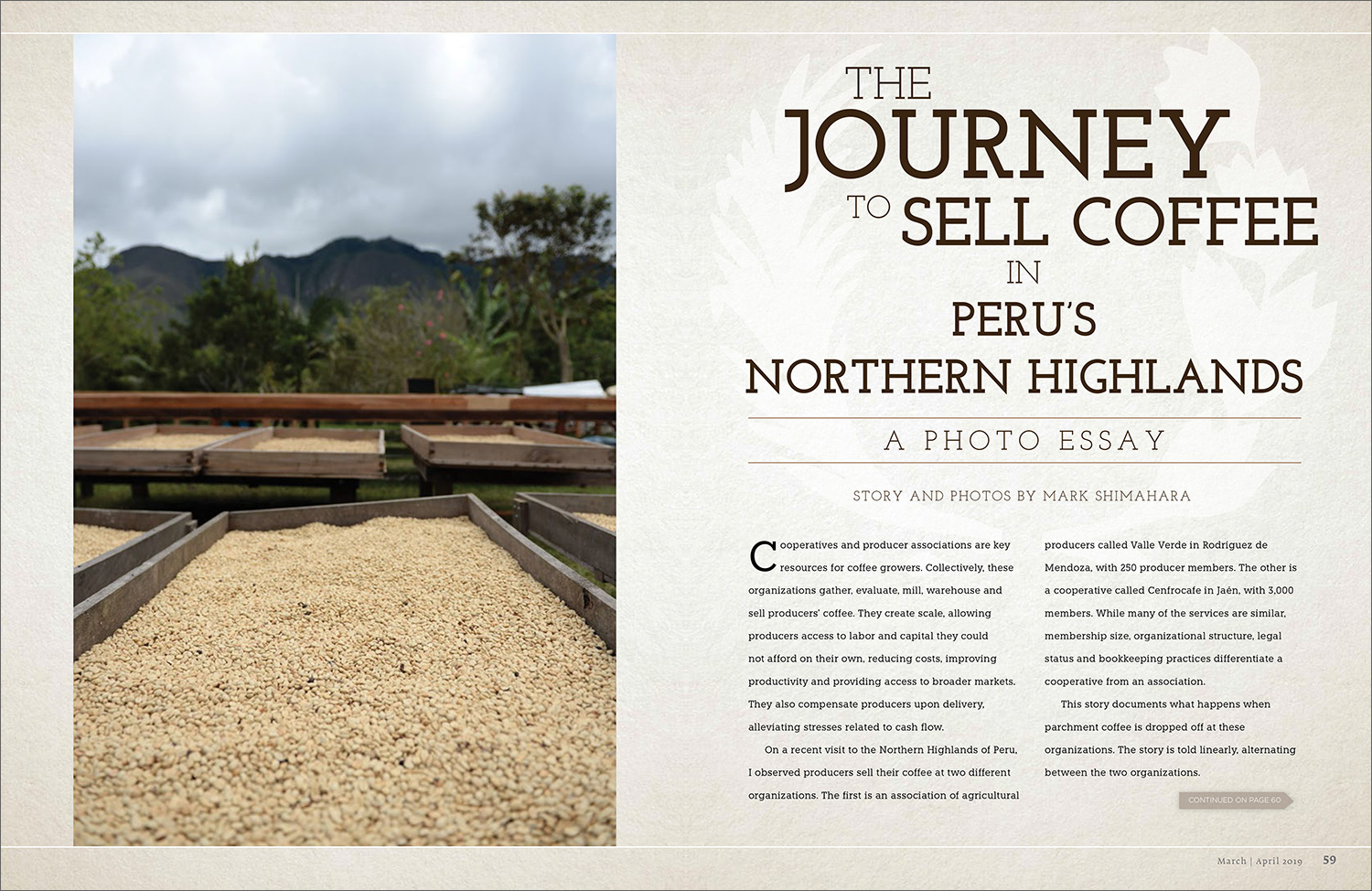The March/April issue of Roast magazine has been released. The issue features a wealth of in-depth coverage, with a major focus on education. Issues explored include: Education opportunities for coffee professionals; food safety, hazard analysis, and risk-based controls; and a closer look at coffee in Peru’s Northern Highlands. Subscribers to Roast magazine receive free digital access. Subscribe to Roast magazine, or purchase the print version of the issue here.
Inside This Issue
In “The Learning Curve: Ancillary Education for Coffee Professionals,” Chris Hallien, product manager for Cropster: Roast and Cropster: Coffee Lab, provides a comprehensive overview of training and education opportunities within the coffee industry. Here’s an excerpt:
While the direct and indirect benefits of training and education are many — for both the individual and the company — it can be difficult to quantify the impact in terms of a specific return on investment. As a result, justification for pursuing outside training can be challenging. Professionals with some sort of certification or specialized training earn, on average, 15 percent more than those without certification, according to salary reports across industries. They also report higher levels of job satisfaction and confidence in their performance.
Mike Ebert, founder of Firedancer Coffee Consultants, gives coffee roasters some practical advice in “Is Your Food Safety Plan Complete? A Primer on Hazard Analysis and Risk-Based Controls,” taking a look a the actions that need to be taken to comply with the Food Safety Modernization Act (FSMA):
All coffee roasters are different, not only in the products they produce and the intended use of those products, but also in the flow of product through the roasting plant. All of this has an impact on your plan. That’s why there are no boilerplate documents you can use to build your plan — you must develop the plan on your own.
Mark Shimahara, author of Coffee Covered: A Photographic Journey of Coffee From Farm to Cup and Roast photographer, chronicles his recent visit to Peru in the photo essay, “The Journey to Sell Coffee in Peru’s Northern Highlands.”
On a recent visit to the Northern Highlands of Peru, I observed producers selling their coffee at two different organizations. The first is an association of agricultural producers called Valle Verde in Rodríguez de Mendoza, with 250 producer members. The other is a cooperative called Cenfrocafe in Jaén, with 3,000 members. While many of the services are similar, membership size, organizational structure, legal status and bookkeeping practices differentiate a cooperative from an association.
Features
The Learning Curve
Ancillary Education for Coffee Professionals
Is Your Food Safety Plan Complete?
A Primer on Hazard Analysis and Risk-Based Controls
The Journey to Sell Coffee in Peru’s Northern Highlands
A Photo Essay
Columns
From the Publisher
News Item
Building Value Through Processing: CQI’s Q Processing Program
Technically Speaking
Demystifying Roast Analysis: Colorimeters Versus Spectrophotometers
The Coffee Review
“Big-Bean” Coffee Varieties: Novelty, Scarcity and Atypical Sensory Pleasures
Flamekeeper
Paul Thornton: A Veteran Roaster’s Coffee Career
First Crack
Hot Products & Fresh Press










Comment